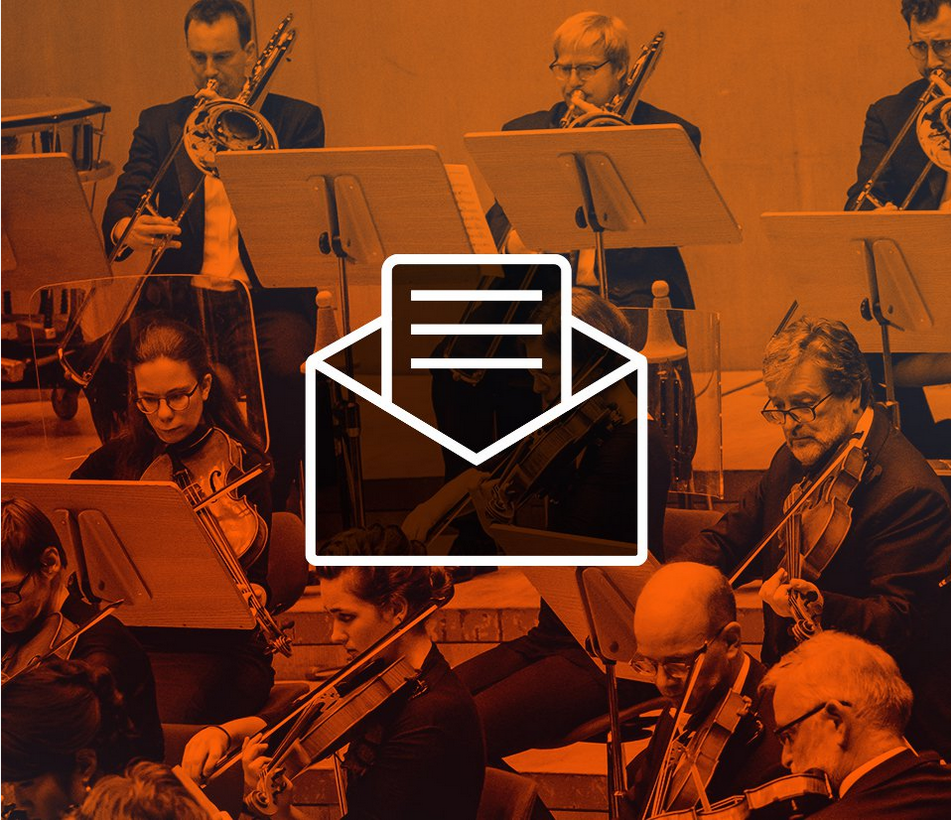Intoxicating sounds
Edward Elgar
Concerto for violin and orchestra in B minor op. 61 (1909-10)
Albert Roussel
Suite No. 2 from the ballet Bacchus et Ariane op. 43 (1930)
Maurice Ravel
La Valse Poème choréographique pour orchestre (1906–20)
- Frank Peter Zimmermann violin
- Gürzenich-Orchester Köln
- Ariane Matiakh Conductor
Introduction 50 minutes before the concert
Anyone who has ever danced the Viennese Waltz will know that an air of royal-imperial grandeur and stylistic elegance is not the only sensation that overcomes you. A profound sense of dizziness and centrifugal force are part of the deal. What in the beginning seems cheerful and buoyant quickly turns into sensual frenzy, much like a spinning top gone crazy. There is no piece that shows these two aspects of waltzing in such a poignant and Viennese way as Ravel’s La Valse, so much so that even the famous impresario Sergei Diaghilev, who had commissioned the work, felt it was a bit over the top for his ballet company. But Ravel’s orchestral dance is so mesmerizing, so colourful and rhythmically bizarre that it is easy to visualize the frenzy on an imaginary dancefloor: »You can see a huge hall with countless people spinning in circles,« said the composer about La Valse. In less than 14 minutes, the illusive bliss of waltzing turns into apocalyptic ecstasy.
A piece that eventually did fulfill its purpose as ballet music is Albert Roussel’s Bacchus et Ariadne, music to the ancient Greek myth – beautiful, almost fragrant sounds which the Frenchman and Ravel-contemporary later distilled into two suites for orchestra. Seduction, enchantment, orgiastic celebrations intoxicated with love, these substances are better enjoyed on a purely musical level. Bacchus, whose full-time occupation as God of wine-making rarely leaves him without a motley entourage of party guests, snatches the mortal Ariadne who was stood up by her ex-lover Theseus on the island of Naxos. Bacchus, aka Dionysus, and his Ariadne celebrate a triumphant Bacchanal together which Albert Roussel sets as sweeping, dazzling party for orchestra.
From Ariadne to Alice: Edward Elgar was in need of a muse when he started to work on his violin concerto. Conveniently, she had the same name as the wife. »My work has me burning & I am composing like mad. You should come & see it (& hear it).« Having started out as a violinist, Elgar knew the instrument like the back of his hand. Surely, that is one reason why his opus 43 shows the perfect balance between the soloist and the orchestra. Star violinist Fritz Kreisler had commissioned this luscious, opulent work: a mosaic of countless ideas and melodies, a stream of yearning thoughts, led by the violin and painted in a variety of nuanced colours by the orchestra. Together, they indulge in an ecstatic final movement, including what might be the most touching solo cadenza ever. Thanks to our soloist, the world-famous violinist Frank Peter Zimmermann, the enormous technical difficulties fade away in the light of the musical rush of emotions. »Herein is enshrined the soul of..…,« Edward Elgar, prone to the enigma, wrote in the score. Five dots – perhaps they stand for the name Alice. But if yes, then which?

